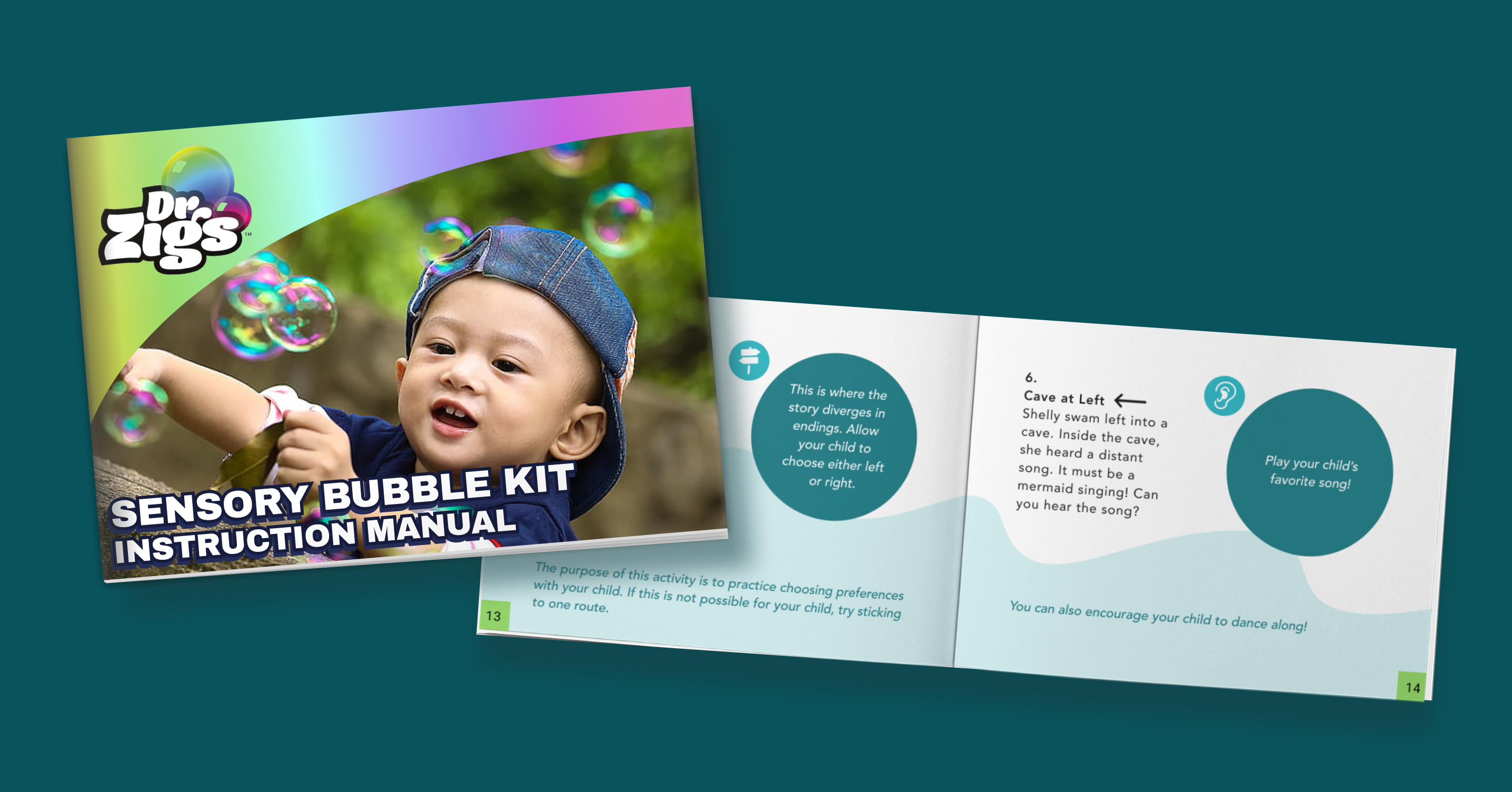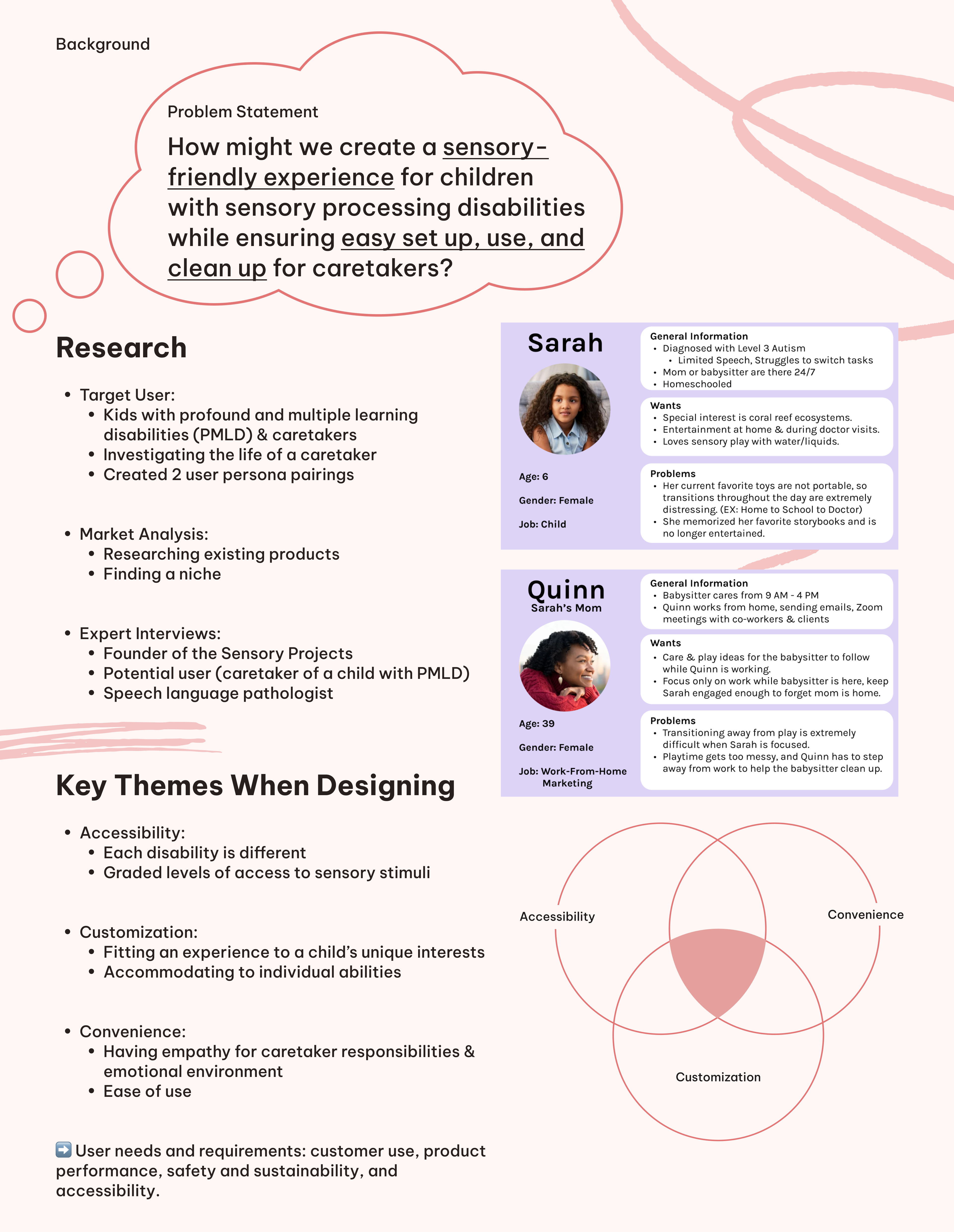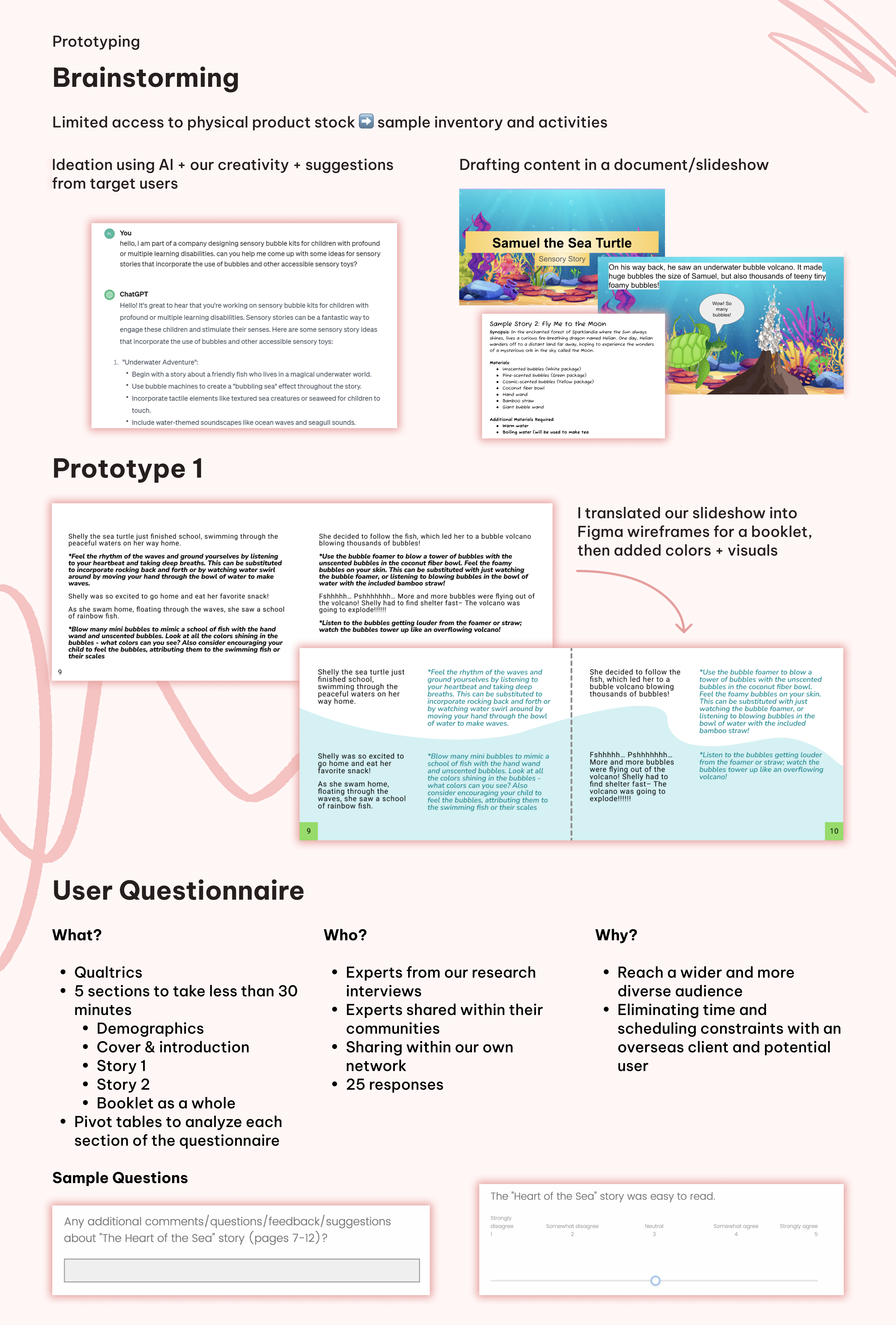
This project was for my Human Factors Product Design course taken in Fall 2023. We focused on creating an avenue for play and sensory development through a sensory bubble kit, pairing a sensory story with bubble play. Centering the user base of caretakers of children with profound and multiple learning disabilities (PMLD), we aimed to maximize accessibility through sensory engagement with bubble play. Through our product development, we incorporated iterative prototyping, user interviews, and usability testing to align with our client’s values of sustainability, accessibility, and fun.
The goal of the project was to develop a cohesive and comprehensive sensory bubble kit to align with the Dr. Zigs company vision for sustainability, accessibility, and fun. Our team was tasked with creating an overarching vision for a sensory bubble kit, expanding the sensory accessibility of this product through the addition of a sensory story (a concise narrative paired with sensory components to encourage cognitive engagement and response to stimuli). We focused on the target users of caretakers of children with profound and multiple learning disabilities (PMLD). In our scope, we aimed to answer the question: how might we create a sensory-friendly experience for children with sensory processing disabilities while ensuring easy set up, use, and clean up for caretakers?
With our problem statement in mind, we began with research through target user analysis, market analysis, and expert interviews. Our research yielded overlapping themes in accessibility, customization, and convenience. Based on our understanding of our target users and existing market, we created a list of user needs and requirements to inform our prototype.

Because our client was international, we had limited access to the physical products, so we focused on creating a manual for an accessible sensory bubble kit that would contain a sample inventory and stories for bubble activities. To create our prototype, we brainstormed using AI, our creativity, and suggestions from target users. We then prototyped a picture book of 2 sample stories in a slideshow, which I translated into wireframes of spreads in Figma. Adding visuals and color based on our curated moodboard finalized our first prototype, viewable here.
We proceeded to test our prototype through a self-administered questionnaire on Qualtrics to reach the most amount of people given our resources.

I analyzed the responses to our survey in quantitative and qualitative measures (number of responses to each rating and user suggestions). Overall, our results indicated lower usability for our second sample story and overall text formatting.
In our modified prototype, we aimed to address specific concerns about readability and access through text and color. We created more space by reducing shortening text chunks with more paragraph divides. A focal point of our redesign was creating more hierarchy and grouping in our sensory stories to separate the story text from the corresponding sensory action. We added further accessibility options through visual icons, higher contrast colors, and alternative suggestions for participation in an activity. The resulting prototype was easier to read, differentiate between text, and customize; it can be viewed here.
Given a longer timeline, we would have more thoroughly tested our usability questionnaire to check for consistent interpretations of our questions and scaling methods, as we realized in our analysis that using a sliding scale format may have resulted in some responses when the person may have actually skipped a question.
However, the project was still a great learning experience which has made me more aware of the level of testing needed for usability. Creating the kit was a fun and fulfilling way to engage with principles of user experience research, usability testing, and accessible design while conducting interviews helped us empathize with our target users to ultimately create a prototype for a market-ready product that sparked excitement for potential customers.

I will get back to you within three business days.